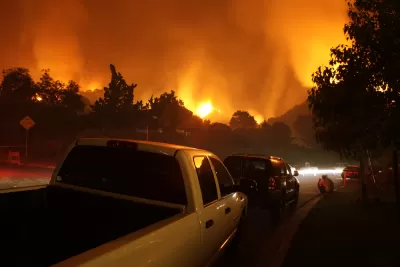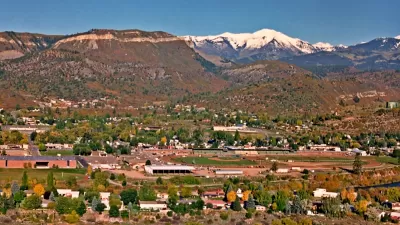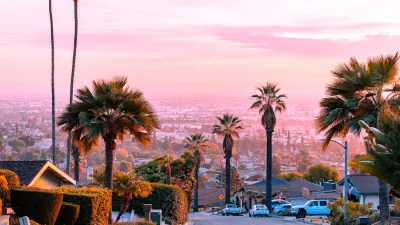Wildfire planning often focuses on individual buildings, but little guidance exists for effective citywide evacuation planning.

Increasingly powerful fires are devastating communities around the world, with tens of thousands of people already affected this year. “And yet, when it comes to things like planning evacuations, best practices don’t really exist—there’s no book to consult, no checklist to follow,” writes Caroline Mimbs Nyce in The Atlantic.
“The reason for this is that wildfire-evacuation research is still in its infancy,” Mimbs Nice explains. Although robust fire codes for buildings do exist, the same can’t be said for whole communities. Meanwhile, the unpredictable nature of fire makes it difficult to model predicted outcomes and establish protocols.
Mimbs Nyce outlines the challenges faced by authorities and residents during a fire: notification, time to meet with loved ones and get essentials, and transit time out of an affected area, which can be affected by road design, exit routes, and traffic. In addition to evacuation preparations, a town can also designate a highly protected gathering place as a refuge for people unable to flee.
Ali Mosleh, director of the B. John Garrick Institute for the Risk Sciences at UCLA, emphasizes the importance of developing standards catered to the needs of different types of communities. “They might need different numbers of evacuation routes, and different sorts of community-warning systems. Existing tools and simulations, like the one run on Camp Fire data, can help guide policy makers.”
FULL STORY: The World Needs to Start Planning for the Fire Age

Trump Administration Could Effectively End Housing Voucher Program
Federal officials are eyeing major cuts to the Section 8 program that helps millions of low-income households pay rent.

Planetizen Federal Action Tracker
A weekly monitor of how Trump’s orders and actions are impacting planners and planning in America.

Ken Jennings Launches Transit Web Series
The Jeopardy champ wants you to ride public transit.

Washington Legislature Passes Rent Increase Cap
A bill that caps rent increases at 7 percent plus inflation is headed to the governor’s desk.

From Planning to Action: How LA County Is Rethinking Climate Resilience
Chief Sustainability Officer Rita Kampalath outlines the County’s shift from planning to implementation in its climate resilience efforts, emphasizing cross-departmental coordination, updated recovery strategies, and the need for flexible funding.

New Mexico Aging Department Commits to Helping Seniors Age ‘In Place’ and ‘Autonomously’ in New Draft Plan
As New Mexico’s population of seniors continues to grow, the state’s aging department is proposing expanded initiatives to help seniors maintain their autonomy while also supporting family caregivers.
Urban Design for Planners 1: Software Tools
This six-course series explores essential urban design concepts using open source software and equips planners with the tools they need to participate fully in the urban design process.
Planning for Universal Design
Learn the tools for implementing Universal Design in planning regulations.
Heyer Gruel & Associates PA
Ada County Highway District
Institute for Housing and Urban Development Studies (IHS)
City of Grandview
Harvard GSD Executive Education
Toledo-Lucas County Plan Commissions
Salt Lake City
NYU Wagner Graduate School of Public Service





























